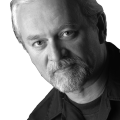One smart Monkee
Take a time trip to 1973 with the ‘new’ Michael Nesmith release

Just as Paul was the cute one in The Beatles and Ringo was the goofball and George the mystic and John the smart one, The Monkees, being a manufactured-for-TV band, followed that model, with Davy Jones as the cute one, Micky Dolenz as the goofball at the drums AND singing lead vocals, Peter Tork as Peter Tork and Michael Nesmith as the smart Monkee.
Nesmith, like Tork, was an actual musician and songwriter when he was hired to become a Monkee. In 1965 – a year before he became a Monkee – he wrote the song “Different Drum,” which was first recorded for an album by the bluegrass band Greenbriar Boys in 1966 and then became a radio hit in 1967 when sung by Linda Ronstadt and the band Stone Poneys. He offered the song up for use in The Monkees TV show, but the producers rejected it.
Nesmith bristled at the disregard for his musicianship as a member of The Monkees, and when he left in 1970, buying out the final years of his contract, he was already working on his second album with “side” group The First National Band, which some credit as being one of the pioneering country rock groups of the era. They played alongside Gram Parsons and the newly formed Flying Burrito Brothers. The group included, at Nesmith’s insistence steel guitarist Orville “Red” Rhodes.
Despite releasing two radio hits (“Joanne” and “Silver Moon”), The First National Band disintegrated in 1971, but Nesmith and Rhodes continued playing together.
A document of that time was recently released on 7a Records, a label devoted exclusively to The Monkees, and it is easy to see why Nesmith insisted on playing with Rhodes. The two make beautiful music together, as Cosmic Partners shows. The 17-track CD was recorded on Aug. 18, 1973, at McCabe’s Guitar Shop, a music store and concert venue in Santa Monica, Calif.
Nesmith opens the show with the melancholy “Tomorrow and Me,” his well-strummed acoustic keeping time as Rhodes sings and soars on his pedal steel, producing big, dreamy, creamy notes dripping through the air.
This is the cosmic partnership of the title. In Rhodes, Nesmith found the sound that suited both his mournful voice and lifted his lyrics, or as Nesmith writes in the excellent booklet that accompanies the CD: “At McCabe’s, the thing that distinguishes my and Red’s dance routines is that he’s high and I’m not. During those days I didn’t work high. You can hear how close we were in rhythms and everything else, but you can also hear how cosmic he is. He’s going off into places that you don’t think up musically but you can think up cosmically. And because he played the pedal steel, which is a from-the-ground up cosmic instrument, he was able to sail within those skies and in those circles. He was able to make something happen on a cosmic level.
“I had done my work spiritually in terms of setting up the base and the circumstances inside the poetry of the song, working out the melody and working out the other things that go into creating a song. But when he came in sailing over the top of it and diving into it like a huge pool in the back of a huge hotel and walking on the water and floating on a carpet and everything in the pool – that’s when he starts to add what he adds.”
Read the above while listening to almost any track on Cosmic Partners and you’ll get the picture.
Nesmith says on the recording that he and Rhodes were doing traditional country (they both launch briefly into a Hank Williams’ “Cold, Cold Heart”) until they got “spaced out” by “eating doughnuts and stuff” (the booklet explains that Rhodes was into making potent edibles at the time), “and ended up doing strange things.” Nesmith told the audience to watch for “a lot of funny things going on” in Rhodes’ eyes as he plays. Then they launch into a couple of instrumentals, one of which (the polka “Rose City Chimes”) shows off Rhodes’ skills with the traditional country sounds of a pedal steel, and then “Poinciana,” which allows Rhodes an orchestral approach to his instrument, as well as the swelling sweeps that sound like hearts melting.
Just before finishing on a high note upon the advice of Lon Chaney Jr. (“Play the hits.”) with the two aforementioned Last National Band hits “Joanne” and “Silver Moon,” Nesmith tells a two-part Monkee-era tale – or, as he says, “when The Monkees trip was going on” or the “strange 1968 star trip”– called “The Great Escape.”
That was great advice from Lon. “Joanne” is a beautiful song, both the way Nesmith sings it and the way Rhodes propels it.
A nostalgia trip was going on in the early 1970s, and as a young man I said I would never be nostalgic. But now, after listening to this CD, I am deeply nostalgic for 1973. Who loves ya, baby?
